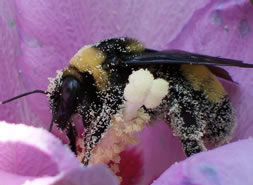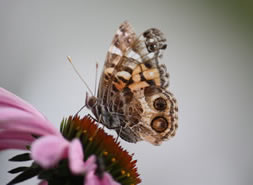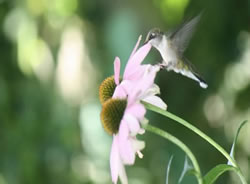| |
Today, possible declines in the health and population of pollinators pose a significant threat to the integrity of biodiversity, to global food webs, and to human health. Factors which could contribute to declines include: improper use of pesticides and herbicides; habitat fragmentation, loss, and degradation causing a reduction of food sources and sites for mating, nesting, roosting, and migration; aggressive competition from non-native species; disease, predators, and parasites; climate change; and lack of floral diversity.
Some Examples:
- The number of commercially managed honeybee colonies in the U.S. has declined from 5.9 million in the 1940’s to 4.3 million in 1985 and 2.7 million in 1995 (Ingram et al., 1996 In Kearns et al., 1998). Feral bees are essentially gone in the U.S. (Watanabe, 1994).
- At least 2 bat and 13 bird species listed in the United States as endangered by the Fish and Wildlife Service are pollinators. It remains unknown how many of the listed insects are pollinators or how many listed plants require pollinators (Nabhan, 1996).
- At least 82 species of mammalian pollinators and 103 species of avian pollinators are considered threatened or extinct according to IUCN criteria (Nabhan, 1996).
Fortunately, the importance of pollinators has not gone unnoticed. In recognition of the significance of a stable pollinator population the Coevolution Institute collaborating with the National Fish & Wildlife Foundation established the North American Pollinator Protection Campaign (NAPPC) in 1999. The importance of pollinator services to ecosystem and economic health is well documented (Sobeich and Savignano, 2000):
- Animal pollinators are needed for the reproduction of 90% of flowering plants and one third of human food crops (Buchmann and Nabhan, 1996; Free, 1970 In Tepedino, 1979; and McGregor, 1976 In Tepedino, 1993).
- Domestic honeybees pollinate approximately $10 billion worth of crops in the U.S. each year (Watanabe, 1994). Bee poisonings from pesticides result in annual losses of $14.3 million (Pimental et al., 1992 In Ingram et al., 1996a).
- Pollinators support biodiversity, as there is a positive correlation between plant diversity and pollinator diversity (Heithaus, 1974 In Tepedino, 1979; Moldenke, 1975 In Tepedino, 1979; del Moral and Standley, 1979 In Tepedino, 1979).
- The elimination, replacement or reduction of a specific species of pollinator may result in the decline of a specific plant species, which in turn may affect relative plant abundance, and hence community dynamics (Tepedino, 1979; Buchmann and Nabhan, 1966; and USEPA, 1998b) and impact wild animals and humans that depend on those plants (Buchmann and Nabhan, 1996; and Kevan, 1977 In Allen-Wardell et al., 1998).
It is essential that we actively conserve a diversity of pollinators and sustain natural ecosystems in order to preserve the quality of human and all other species of life. Without a wide human constituency and broad effort to protect them, pollinating species could irrevocably decline. |


